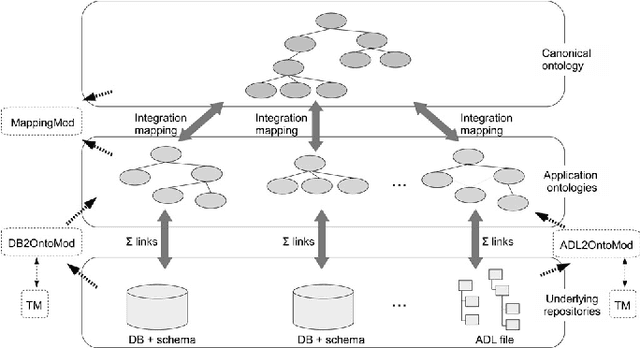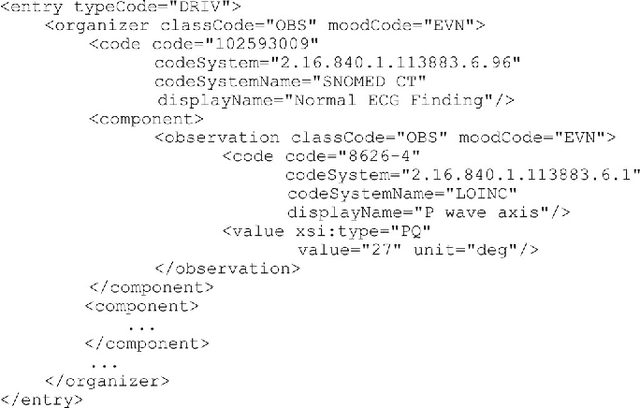Jesús Bermúdez
SSDOnt: an Ontology for representing Single-Subject Design Studies
Jan 26, 2024Abstract:Background: Single-Subject Design is used in several areas such as education and biomedicine. However, no suited formal vocabulary exists for annotating the detailed configuration and the results of this type of research studies with the appropriate granularity for looking for information about them. Therefore, the search for those study designs relies heavily on a syntactical search on the abstract, keywords or full text of the publications about the study, which entails some limitations. Objective: To present SSDOnt, a specific purpose ontology for describing and annotating single-subject design studies, so that complex questions can be asked about them afterwards. Methods: The ontology was developed following the NeOn methodology. Once the requirements of the ontology were defined, a formal model was described in a Description Logic and later implemented in the ontology language OWL 2 DL. Results: We show how the ontology provides a reference model with a suitable terminology for the annotation and searching of single-subject design studies and their main components, such as the phases, the intervention types, the outcomes and the results. Some mappings with terms of related ontologies have been established. We show as proof-of-concept that classes in the ontology can be easily extended to annotate more precise information about specific interventions and outcomes such as those related to autism. Moreover, we provide examples of some types of queries that can be posed to the ontology. Conclusions: SSDOnt has achieved the purpose of covering the descriptions of the domain of single-subject research studies.
* This document is the Accepted Manuscript version of a Published Work that appeared in final form in Methods of Information in Medicine 57(01/02) : 55-61 (2018), copyright 2018 Schattauer. To access the final edited and published work see https://doi.org/10.3414/ME17-01-0109
Toward Semantic Interoperability of Electronic Health Records
Jan 22, 2024

Abstract:Although the goal of achieving semantic interoperability of electronic health records (EHRs) is pursued by many researchers, it has not been accomplished yet. In this paper, we present a proposal that smoothes out the way toward the achievement of that goal. In particular, our study focuses on medical diagnoses statements. In summary, the main contributions of our ontology-based proposal are the following: first, it includes a canonical ontology whose EHR-related terms focus on semantic aspects. As a result, their descriptions are independent of languages and technology aspects used in different organizations to represent EHRs. Moreover, those terms are related to their corresponding codes in well-known medical terminologies. Second, it deals with modules that allow obtaining rich ontological representations of EHR information managed by proprietary models of health information systems. The features of one specific module are shown as reference. Third, it considers the necessary mapping axioms between ontological terms enhanced with so-called path mappings. This feature smoothes out structural differences between heterogeneous EHR representations, allowing proper alignment of information.
* This is the Accepted Manuscript. The definitive, peer reviewed and edited version of this article is: Idoia Berges, Jes\'us Berm\'udez, Arantza Illarramendi: Toward Semantic Interoperability of Electronic Health Records. IEEE Trans. Inf. Technol. Biomed. 16(3): 424-431 (2012). DOI:10.1109/TITB.2011.2180917. Copyright 2011 IEEE
A Telerehabilitation System for the Selection, Evaluation and Remote Management of Therapies
Jan 16, 2024Abstract:Telerehabilitation systems that support physical therapy sessions anywhere can help save healthcare costs while also improving the quality of life of the users that need rehabilitation. The main contribution of this paper is to present, as a whole, all the features supported by the innovative Kinect-based Telerehabilitation System (KiReS). In addition to the functionalities provided by current systems, it handles two new ones that could be incorporated into them, in order to give a step forward towards a new generation of telerehabilitation systems. The knowledge extraction functionality handles knowledge about the physical therapy record of patients and treatment protocols described in an ontology, named TRHONT, to select the adequate exercises for the rehabilitation of patients. The teleimmersion functionality provides a convenient, effective and user-friendly experience when performing the telerehabilitation, through a two-way real-time multimedia communication. The ontology contains about 2300 classes and 100 properties, and the system allows a reliable transmission of Kinect video depth, audio and skeleton data, being able to adapt to various network conditions. Moreover, the system has been tested with patients who suffered from shoulder disorders or total hip replacement.
 Add to Chrome
Add to Chrome Add to Firefox
Add to Firefox Add to Edge
Add to Edge